Samsung offers two top models with a 4K resolution when it comes to MiniLED technology. In this test, we took a closer look at the not so "fancy" QN95D and QN90D, which we can also find under the name QN92D. Samsung proudly calls its MiniLED televisions the NeoQLED series. Thanks to this technology, the TV offers excellent contrast and high brightness, making movie watching an experience reminiscent of true cinema. During everyday use, the Tizen system performed excellently. It is fast, intuitive, and allows seamless switching between applications. We also appreciated how well the TV handles lower quality materials – traditional TV or older films looked better than we expected, and the advanced image processing algorithms did their job. This is a TV that can really enhance the viewing experience of content that isn't always in high resolution. The solar remote was a pleasant surprise for us. Although minimalist and with a small number of buttons, it turned out to be very practical – it allowed us to control not just the TV, but also other devices, like the decoder (Canal+) or soundbar. This meant we could reduce the number of remotes on the table, which immediately improved usability. Plus, solar charging – a simple idea that eliminates the need for battery replacements and aligns with eco-friendly trends. As for the picture in different conditions, the TV performs well in both bright and dark rooms. The high brightness and numerous dimming zones handle most content, although sometimes in contrasting scenes a halo effect is noticeable. The colours, however, are vibrant and natural, and the QLED coating gives them intensity. For even better results, we decided on calibration – after which the picture looked even more detailed and natural, which only confirmed our belief that QN92/QN90 is an excellent choice. And what about motion on the screen? It is absolutely fluid. The 144 Hz panel does an excellent job with dynamic scenes – fast actions, sports, games – everything looks natural and without blurring. We particularly appreciated the Auto Motion Plus Game feature, which makes games running at 30 frames look smoother, resembling 45 frames, and at 60 Hz, motion becomes even more natural, as if operating at 90 Hz. For gamers, this is a huge plus, especially since low input lag and features like the game bar further enhance the gaming experience. This is a TV that performs well in any situation – from evening screenings to gaming marathons. QN92D is a practical, well-designed TV that offers a picture quality that's really hard to ignore. An ideal choice for those looking for something more than just a regular screen for everyday content.
- Matching (Score)
- Our verdict
- TV appearance
- Where to buy
- Contrast and black detail
- HDR effect quality
- Factory color reproduction
- Color reproduction after calibration
- Smoothness of tonal transitions
- Image scaling and smoothness of tonal transitions
- Blur and motion smoothness
- Console compatibility and gaming features
- Input lag
- Compatibility with PC
- Viewing angles
- TV efficiency during daytime
- Details about the matrix
- TV features
- Apps
- Playing files from USB
- Sound
Samsung Neo QLED QN90D / QN92D vs LG OLED G5
Direct compare
Neo QLED / QN92D / QN90D
G54 / G51 / G55 / LW / LS

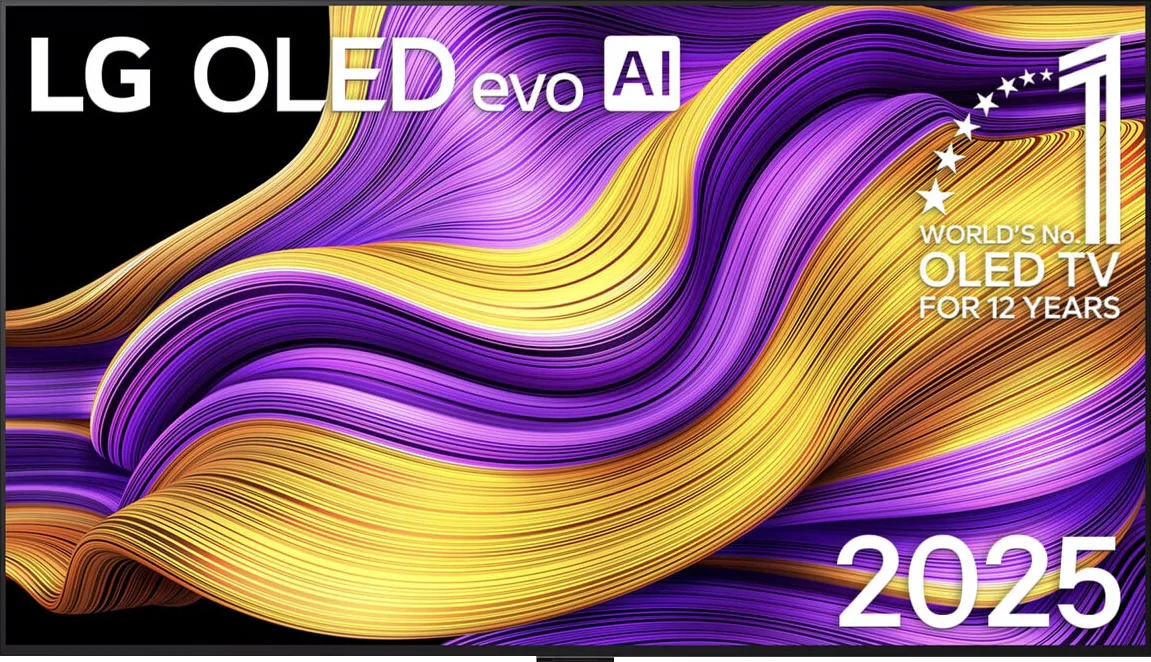
Panel type: LCD VA (wide viewing angle)
Resolution: 3840x2160
System: Tizen
Model year: 2024
Complete the survey to find out the result

Panel type: WRGB OLED
Resolution: 3840x2160
System: WebOS
Model year: 2025
Complete the survey to find out the result

Overall rating
7.8
8.9
Movies and series in UHD quality
7.9
9.2
Classic TV, YouTube
7.9
9.2
Sports broadcasts (TV and apps)
7.7
9.0
Gaming on console
9.1
9.6
TV as a computer monitor
8.6
8.8
Watching in bright light
6.4
8.0
Utility functions
7.4
8.5
Apps
8.7
9.1
Sound quality
6.9
8.7
Complete the survey to find out what fits your preferences
Advantages
High brightness
Good contrast
Intuitive Tizen operating system
Great for gamers and sports fans (HDMI 2.1, 144Hz, low input lag)
Wide viewing angles - unusual for VA panels
Amazing black and contrast
Reference colour reproduction after calibration
Very high brightness in HDR content
Excellent compatibility with consoles and computers
Great motion smoothness - OLED panel 165Hz
Many features for gamers: VRR, ALLM, HGIG, low input lag
Great WebOS operating system with many applications
Superb control with the Magic remote featuring a "cursor" function
Disadvantages
No recording function
No support for DTS format - may be problematic for those using Blu-ray
No support for DTS audio format
Inferior (though still good) viewing angles compared to the predecessor G4
Different remote versions in derivative models – hard to predict which version we will get
Our verdict
LG G5 is a television that not only continues but also expands on what we loved about the previous models in the G series. Instead of following the conventional path, LG opted for a new Tandem OLED panel – and it hit the mark. Picture brightness? Simply, F E N O M E N A L. HDR effect? Close to reference. Colours after calibration? Nearly perfect. Motion smoothness, low latency, and features for gamers? At absolutely top-notch level. The G5 performs well in both movies and games, day and night, with a decoder, console, PC, or even just the remote. Of course – it’s not a product without flaws. It's a shame there’s no support for DTS, viewing angles have worsened compared to its predecessor, and the remote may vary depending on the version. But when we look at the overall picture, it's hard not to get the impression that this is one of the best OLED televisions available on the market, and perhaps even the best. Definitely, when it comes to its versatility and picture quality without the need to resort to extremely expensive models from competitors. If you're looking for a television for everything – for cinema, gaming, a bright lounge, streaming internet content, or connecting a computer – the LG G5 is gear that simply delivers on every front without compromise.
TV appearance





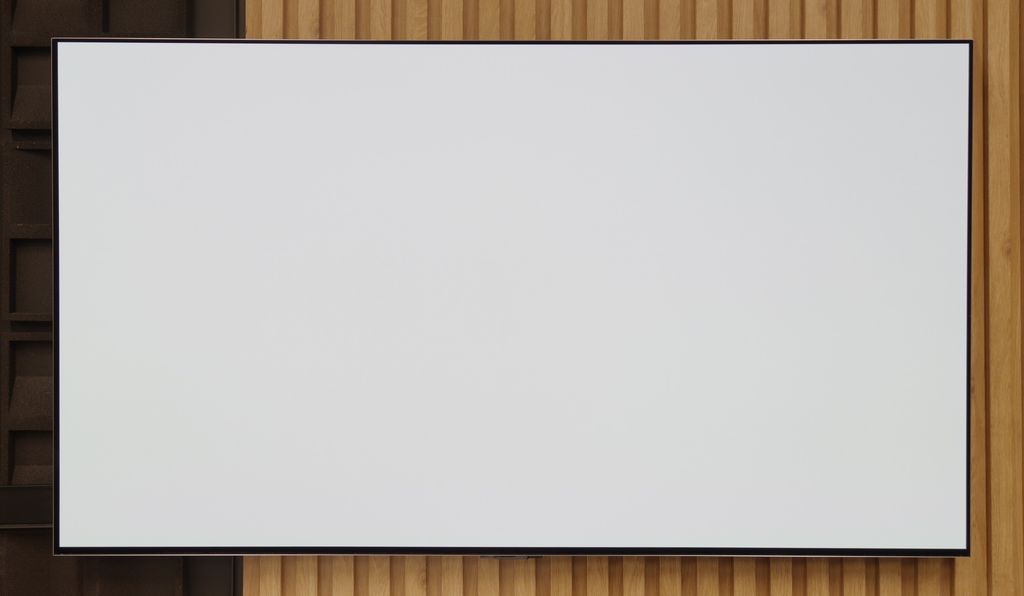
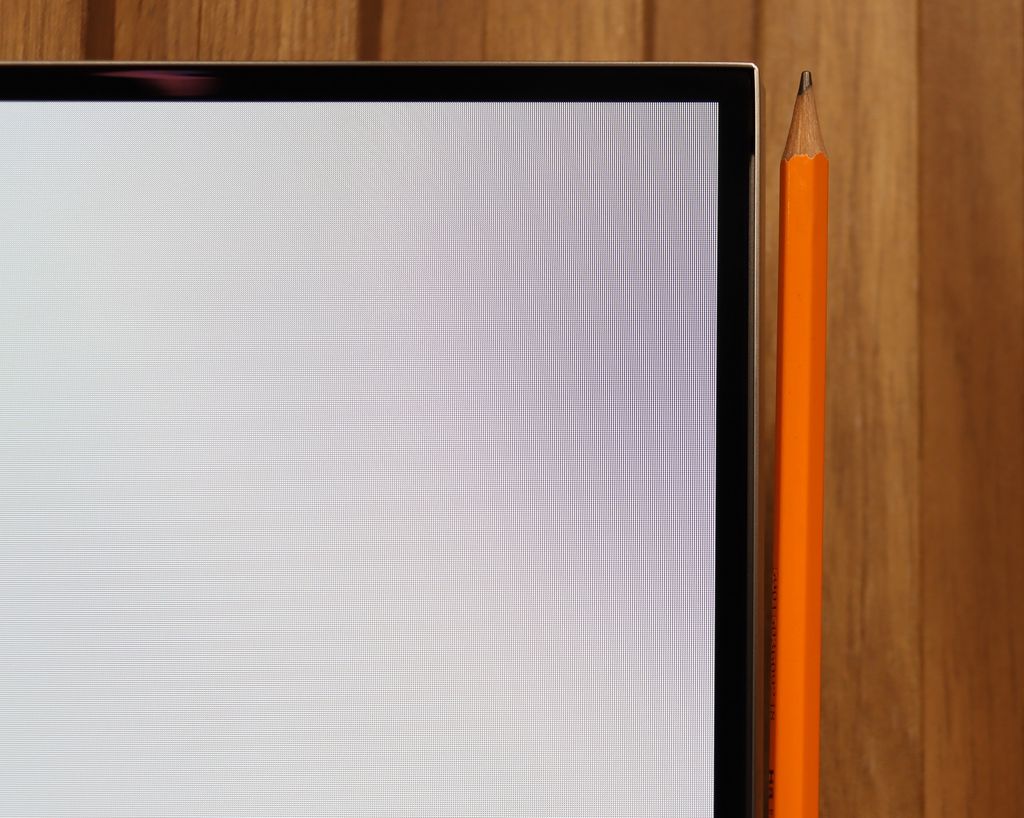
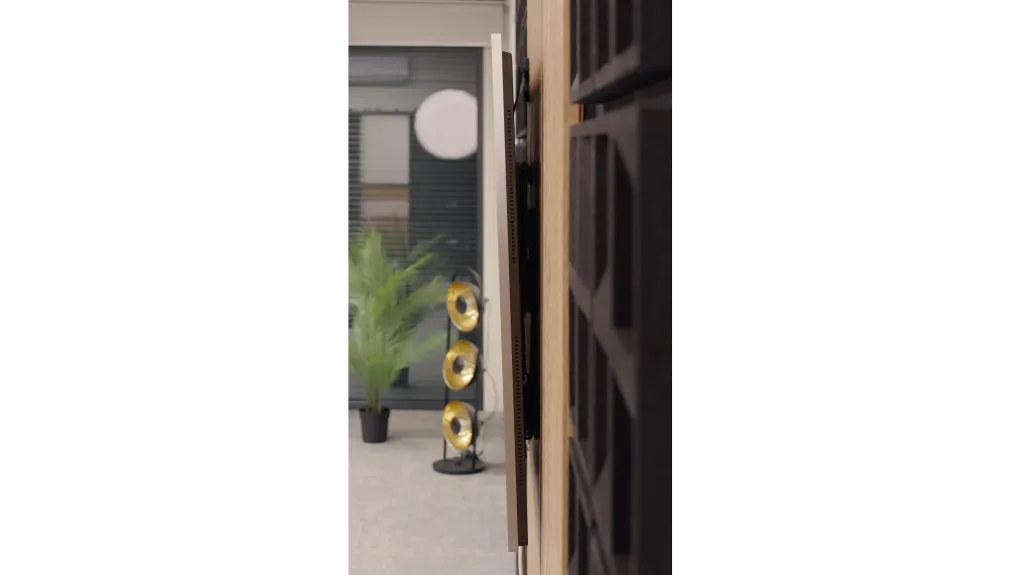
Contrast and black detail
7.9/10
10/10
Local dimming function: Yes, number of zones: 504 (36 x 14)
Contrast:

Result
∞:1

Result
69,000:1

Result
∞:1

Result
5,500:1

Result
2,700:1

Result
∞:1

Result
∞:1

Result
∞:1

Result
∞:1

Result
∞:1
Halo effect and black detail visibility:

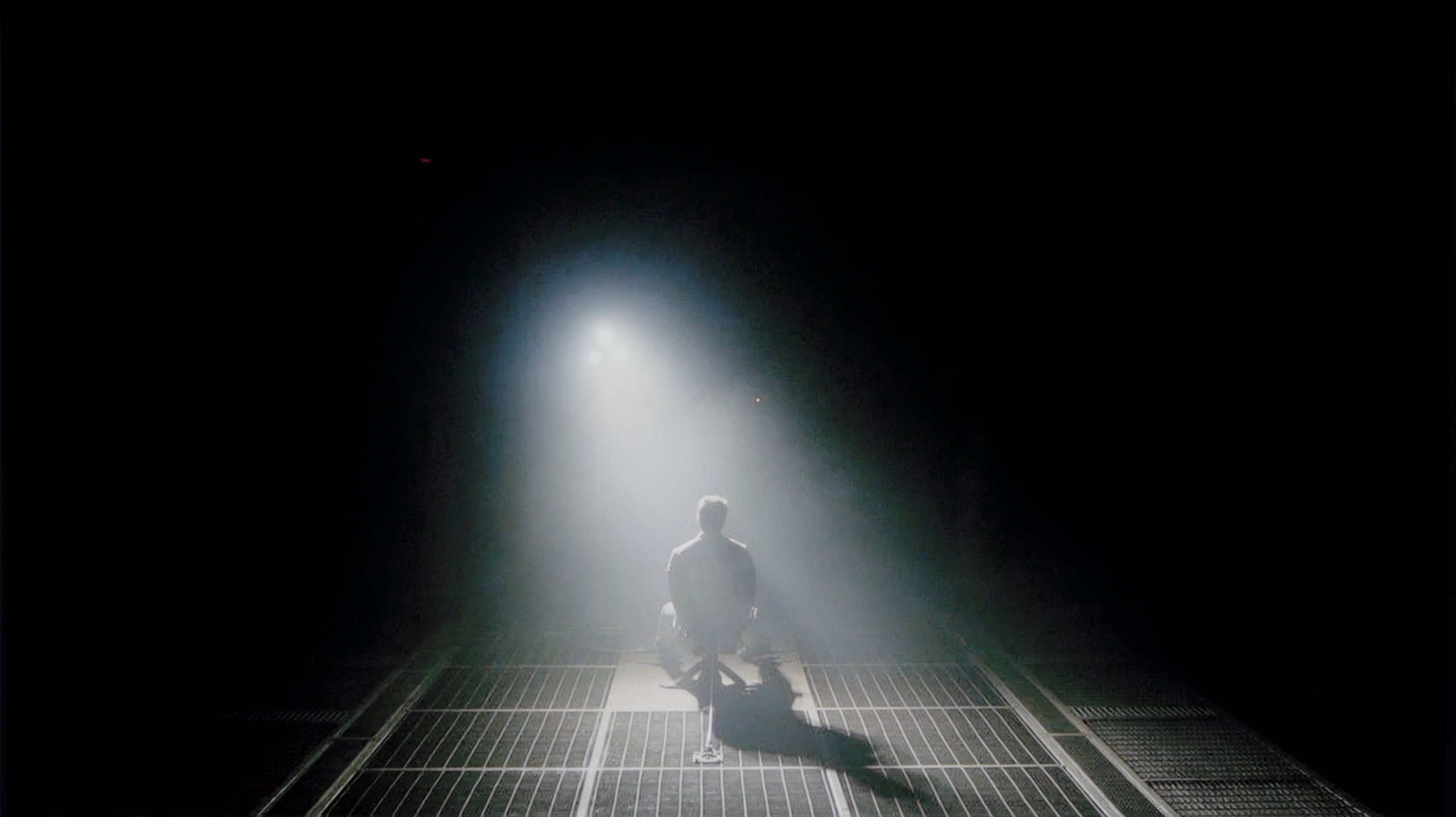
Samsung QN92D is one of the top models of NeoQLED 4K (mini LED) from the Korean manufacturer for 2024. Although it does not offer as many dimming zones as its more refined sibling Samsung QN92D, the number of 504 dimming zones in the 55-inch version is still impressive. The VA panel works well with this solution, providing excellent results in terms of contrast. The contrast in Samsung QN92D is outstanding for a non-OLED television. Even in difficult scenes, like those from the movies "Oblivion" or "Arrival," the contrast is nearly infinite and can compete with the best televisions in the OLED segment, which is quite unusual among LED-lit televisions. However, mini LED diodes have their limitations compared to organic panels, which can lead to some issues. For example, on the last test screen from Pioneer, the television has significant difficulties. This may be due to a very aggressive dimming algorithm, which sometimes causes the mini LED diodes to struggle with what to do – whether to illuminate certain elements or maintain the blacks. Despite these drawbacks, Samsung QN92D is one of the best LCD televisions in terms of contrast and blacks.
LG G5, as expected from an OLED television, impresses with its contrast and black levels. In scenes with a lot of dark areas, the screen presents itself almost perfectly, offering deep, absolute black and infinite contrast – an effect that still cannot be achieved on any LCD television. The new Tandem OLED matrix does not introduce any negative changes compared to previous generations – blacks are perfect regardless of the content. Watching scenes from movies like The Revenant or Oblivion, the excellent separation of lights is clearly visible, without blooming or lightening of dark parts. In this category, LG G5 deserves the highest rating.
HDR effect quality
6.7/10
9.1/10
Luminance measurements in HDR:

Result
1947 nit

Result
617 nit

Result
738 nit

Result
271 nit

Result
1479 nit

Result
2346 nit

Result
2353 nit

Result
2399 nit

Result
2353 nit

Result
2012 nit
Scene from the movie “Pan” (about 2800 nits)


Scene from the movie “Billy Lynn” (about 1100 nits)


Static HDR10


Dynamic: HDR10+
Dynamic: Dolby Vision


HDR luminance chart:
LG OLED G5
Luminancja HDR
Luminance of RGB colors
Samsung Neo QLED QN90D / QN92D
Luminancja HDR
Luminance of RGB colors
During synthetic tests, Samsung QN92D showed its incredible capabilities in terms of brightness. The charts clearly indicate that the television can achieve an impressive 2000 nits, giving it a solid power base to compete with the best models on the market. Such a result places it at the forefront, especially in the context of displaying HDR content, where brightness plays a key role. However, what happens when we move the tests to real film scenes? In favourable conditions, such as the first scene from the movie Life of Pi or the last scene, where the image is completely flooded with light, Samsung QN92D can achieve almost laboratory results, impressing with its brightness. The situation looks different when small, bright objects appear on a dark background, as in the fourth scene from the movie Sicario. In such cases, the television doesn't perform as well – brightness drops several times, and maximum values in the best conditions are around 600 NITS. Similar to contrast, these limitations arise from the use of an aggressive local dimming algorithm. This algorithm aims to reduce the 'halo' effect around bright objects on a dark background, but often at the expense of overall brightness. As a result, while the television performs well in bright scenes, its ability to display full brightness is limited when it comes to small, vivid elements.
LG G5 with its new Tandem OLED panel brings the biggest change in terms of TV brightness. And it’s substantial. This is a truly astronomically bright OLED. In every scene tested – whether it's point lights or full-screen whites from the movie The Meg – brightness on the G5 exceeded 2000 nits. Just a year ago, such values on an OLED were simply unimaginable. And here we are – the G5 is approaching, and at times even surpassing, the best Mini-LEDs on the market. A novelty in the Tandem OLED panel is also the expanded colour gamut coverage – and here the LG G5 performs almost perfectly. DCI-P3 achieves a full 100%, while BT.2020 hovers around 83%. These are some of the highest values currently available on the market – it's hard to find any other TV that comes close to such results, unless we're talking about the best displays with QD-OLED panels. The G5 has almost reference-level HDR quality – both in terms of brightness and colour saturation. This is an OLED that can truly shine – and not just metaphorically.
Factory color reproduction
6.1/10
7.8/10


Factory Mode
After calibration


Factory Mode
After calibration
The best mode that reproduces colours best on the Samsung QN92D has consistently been the Filmmaker mode for years. While it generally offers decent colour quality, it is not free from significant issues. Let's start with the analysis of HD/SDR image quality. The biggest challenge here is the white balance – the graphs show considerable instability, with a clear dominance of red making the image too warm. This distortion causes hues to be unnaturally shifted towards warmer tones, which can negatively affect the perception of materials with natural colours. Contrast, based on the gamma chart, although not the worst, remains far from ideal, impacting the overall image quality, especially in darker scenes.
This issue also persists with 4K materials, such as series or films of higher quality. In this case, the white balance also turns out to be faulty, with noticeable deficiencies in blue and red colour, leading to tonal shifts. Tests using the Colour Checker tool confirm these problems – all colours tend to skew towards yellow shades, further distorting the natural appearance of the image. Although the Filmmaker mode is one of the best available modes for watching cinematic content, it still requires improvements, especially in terms of colour accuracy and white balance.
Our test unit LG G5 had some issues in the factory Filmmaker mode. While the picture might have seemed fine to most people, we knew this TV could do much more. This mode had a noticeable excess of blue tint in the white balance, resulting in a strongly cooled image – especially in HDR modes, where there was additionally a lack of red. The image appeared cold, and its sharpness was artificially boosted and unnatural. Another significant problem was the brightness characteristics. In SDR content, the situation wasn't the worst, aside from a slight dimming of the entire image. However, it fared much worse in HDR materials – due to improper brightness management, the smallest details could completely disappear from the image, while larger, bright elements looked overexposed and lacking in gradation. Fortunately, the G5 supports calibration using 3D LUT (a professional tool for colour calibration), so we decided to take advantage of its professional capabilities and see what it was really capable of. Because while it wasn't terrible even before calibration, the potential of this TV definitely deserved more.
Color reproduction after calibration
8.7/10
9.8/10




After calibration, the Filmmaker mode on the Samsung QN92D television shows significant improvement, particularly in the SDR content range. The white balance has been greatly enhanced – the previous colour misalignment and dominance of red have been eliminated, resulting in a more natural colour reproduction. In terms of brightness, although the gamma chart did not require significant adjustments, it has been stabilised, which affects the overall picture quality.
Regarding high-quality materials, the white balance has also improved in this case. However, it is worth noting the contrast. The EOTF curve, which illustrates the values in this area, appears correct at first glance. However, upon closer inspection, the television struggles to maintain appropriate contrast in film materials. The EOTF curve reveals some discrepancies, suggesting that despite the progress, there are still areas that require improvement in this aspect. The television continues to strive for excellence in contrast reproduction. A strength of this television is the saturation of colours. Skin tones are rendered very well, and although some colours may be slightly oversaturated, the overall effect looks really attractive – the colours appear rich and vibrant.
Despite some shortcomings in contrast, after calibration, the Filmmaker mode on the Samsung QN92D offers excellent image quality, with natural colour reproduction, making it a great choice for watching movies.
After completing the calibration process with professional tools, we can confidently state this – the LG G5 offers almost reference-quality image. Most of the errors related to white balance and the ColorChecker test are below a value of 2, which is a phenomenal result, practically imperceptible to the human eye. And while one could still nitpick that in HDR films the TV still has a tendency to slightly dim the smallest elements of the image, in practice this does not negatively affect the overall reception. Hats off to LG, as once again they provide users with enormous display settings options – and this, combined with very good parameters of the panel itself, results in an image that is truly hard to beat.
Smoothness of tonal transitions
9/10
8.5/10












The fluidity of tonal transitions on the Samsung QN92D TV is excellent, making the image look exceptionally natural, without visible disturbances. In scenes with complex colour gradations, the TV performs brilliantly, providing smooth and uniform transitions. Competing OLED TVs in a similar price range could successfully take a cue from this, as the Samsung QN92D offers quality that places it on par with models equipped with QD-OLED panels.
The fluidity of tonal transitions in the LG G5 is a clear step forward compared to last year's model. Not only has brightness improved, but also the way colours blend, which the G4 sometimes struggled with. In the vast majority of scenes, the G5 has no issues with tonal transitions – there’s no typical banding associated with WOLED technology nor any ugly breaks between colours. Of course, in very dark areas of the image and with shades of grey, small imperfections can still be noticed, but these are things that the average viewer wouldn't even register. In short – it's really good.
Image scaling and smoothness of tonal transitions
7.2/10
8.7/10
Smooth transition function

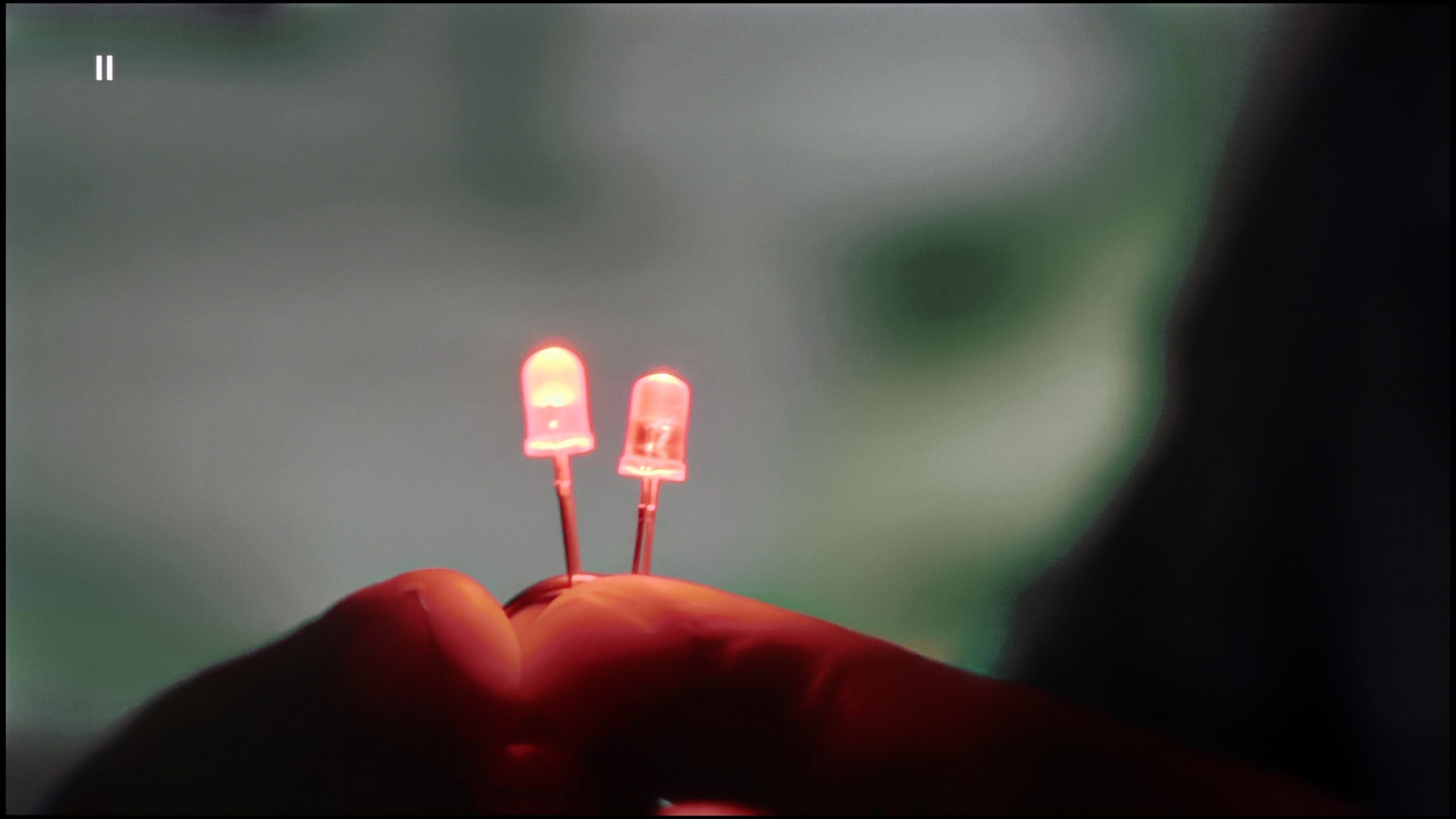
Image without overscan on the SD signal


Let's check how the Samsung QN92D TV performs with tonal transitions in very poor quality materials. The noise reduction feature shows good effectiveness, improving the fluidity of tonal transitions even in difficult conditions. However, it should be noted that, similar to other Samsung TVs, the effectiveness of this feature can lead to the removal of desirable elements, such as film grain, which can sometimes affect the authenticity of the image.
When it comes to digital processing, the Samsung QN92D TV also performs excellently. During tests, the image looked very good, with the model presented in a natural and correct way. Details, such as branches in the background, were reproduced with great precision, highlighting the TV's ability to enhance the quality of low-resolution materials.
Upscaling and digital image processing in the LG G5 performs very well. The television handles lower quality content excellently, especially when the "Smooth Gradation" feature is set to a low level. In this mode, it effectively removes undesirable artifacts and issues with visible tonal transitions. It may also slightly smooth out some desirable details, like the subtle texture of clothing or skin, but importantly – it does not remove film grain, so it's hard to talk about a serious compromise here. This is one of those options that is actually worth turning on.
The G5 also does well with upscaling, which is improving the quality of older materials. The test image with the model looked really solid – slight jaggedness was visible, but that's an effect that can't be completely avoided. On the plus side, there were no overscan issues, which – contrary to appearances – is not obvious, even in 2025.
Blur and motion smoothness
7.5/10
9/10

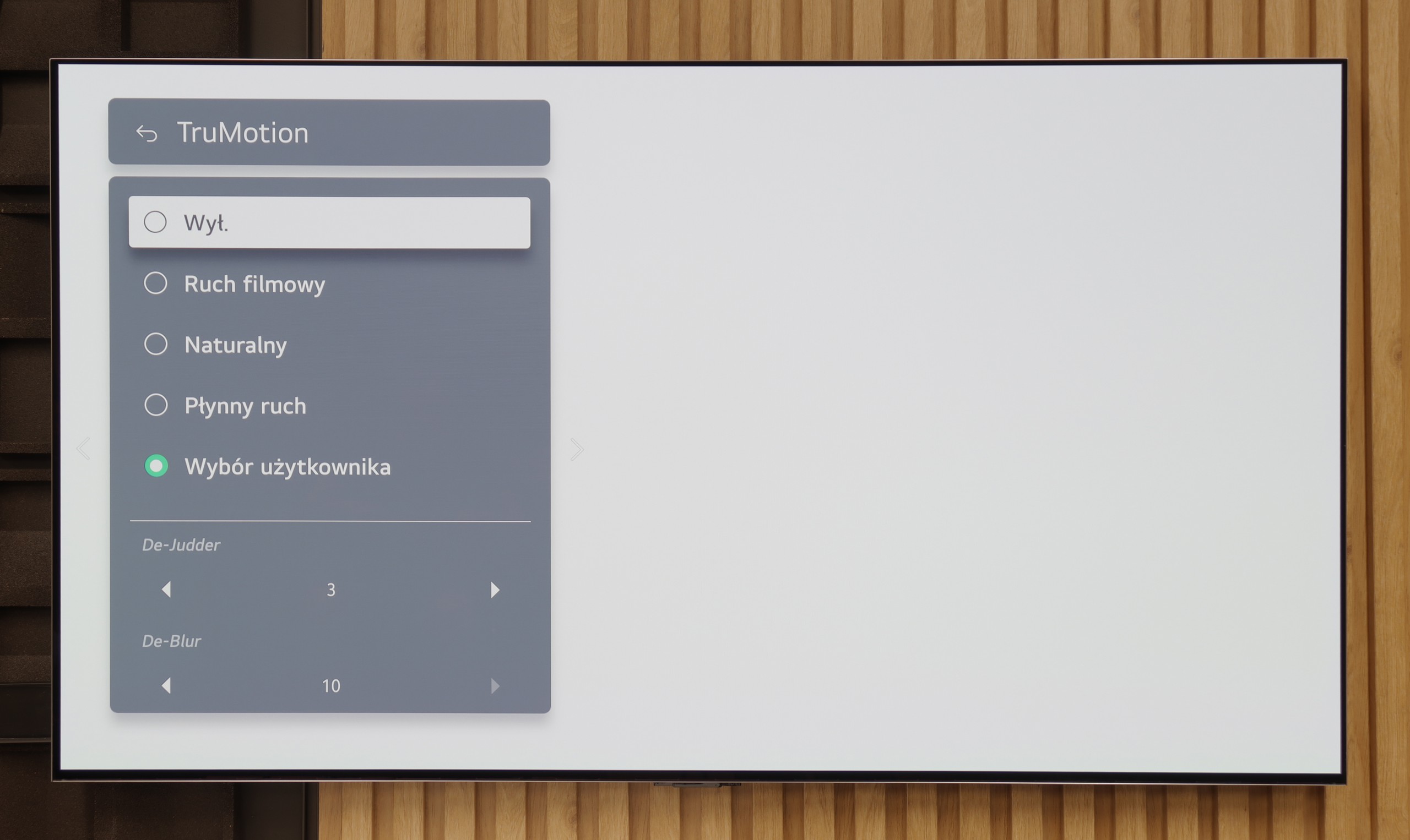
Blur (native resolution, maximum refresh rate):






Blur (BFI function enabled):
Image flickers in this mode



Image flickers in this mode



Smużenie ():
Smużenie (4K 165Hz):



The Samsung QN92D television is equipped with a 144 Hz panel; however, when watching content using the smoothness feature, the maximum refresh rate is 120 Hz. As a result, both gamers and sports enthusiasts will be satisfied with the picture quality. It’s also worth mentioning the available options for image enhancement, such as the "motion blur and judder reduction" feature, which allows users to adjust smoothness to their individual preferences on a 10-point scale. Motion blur reduction increases the sharpness of fast-moving objects, while judder reduction smooths out motion, eliminating the "stutter" effect. With these advanced settings, one can achieve optimal visual experiences, making the Samsung QN92D perfect for both dynamic scenes and intense gaming.
In terms of motion blur, the television performs really well, and it’s hard to pick faults. The only note we might have is a slight overshoot effect noticeable on dark backgrounds during our test with "Ufoludkiem." Nevertheless, thanks to the advanced smoothness settings, the Samsung QN92D excels in both dynamic scenes and intense gaming.
The motion smoothness on the LG G5 is simply phenomenal. The television is equipped with a panel featuring a 165 Hz refresh rate, and this combined with the instantaneous response time of the OLED matrix delivers incredible results. The image doesn’t judder or blur like on traditional LCD televisions. Like most LG models, the G5 comes with a motion smoother, which can be handy when watching movies – we’re talking about the TruMotion mode, of course. With the “De-Blur” and “De-Judder” sliders, we can adjust the smoothness of older materials according to our own preferences, whether we want to maintain the characteristic film jitter or lean towards a more fluid, television-like effect.
Console compatibility and gaming features
9.5/10
10/10
- ALLM
- VRR
- VRR range48 - 144Hz40 - 165Hz
- Dolby Vision Game Mode
- Correct implementation of HGIG
- 1080p@120Hz
- 1440p@120Hz
- 4K@120Hz
- Game bar

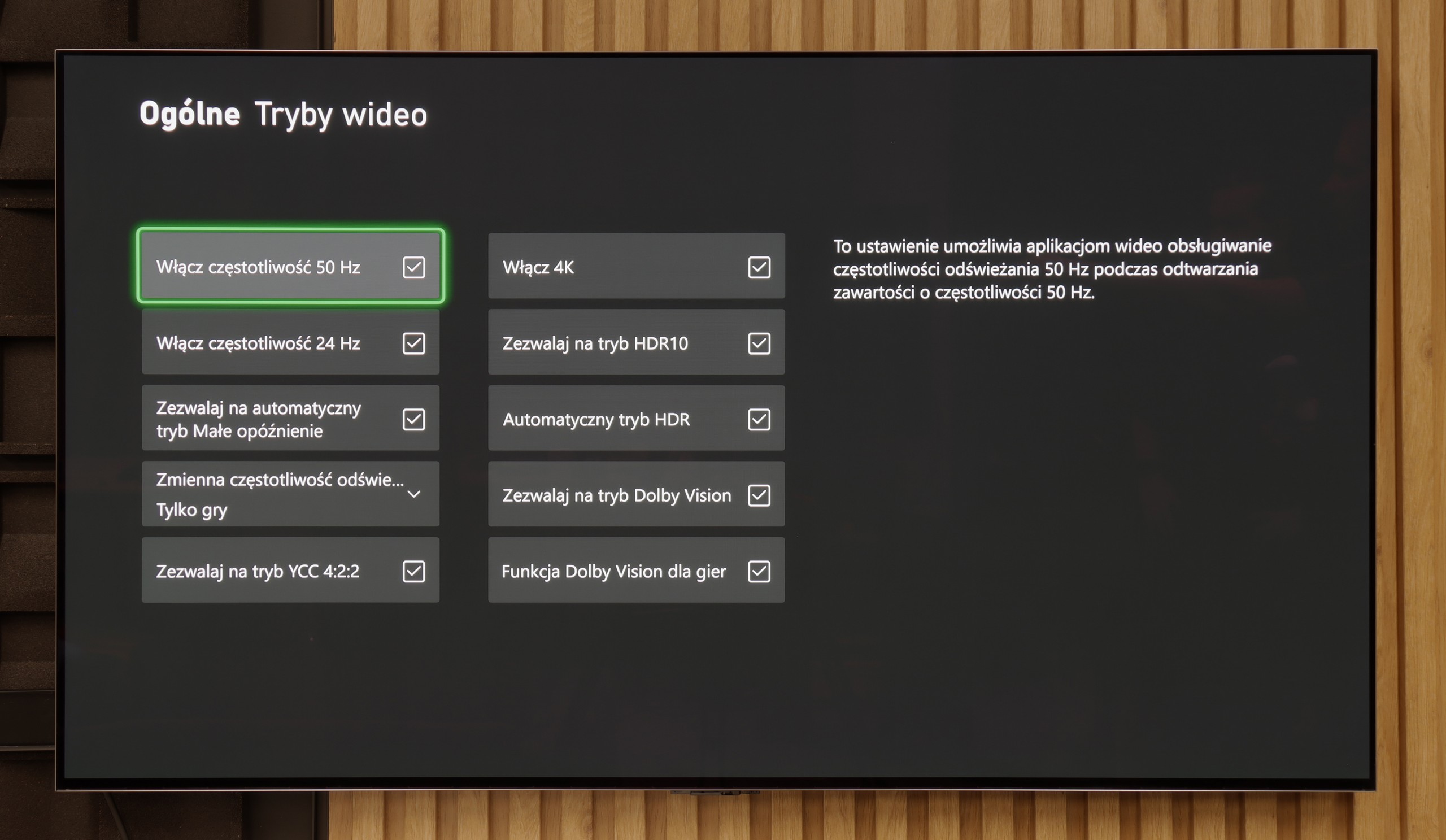

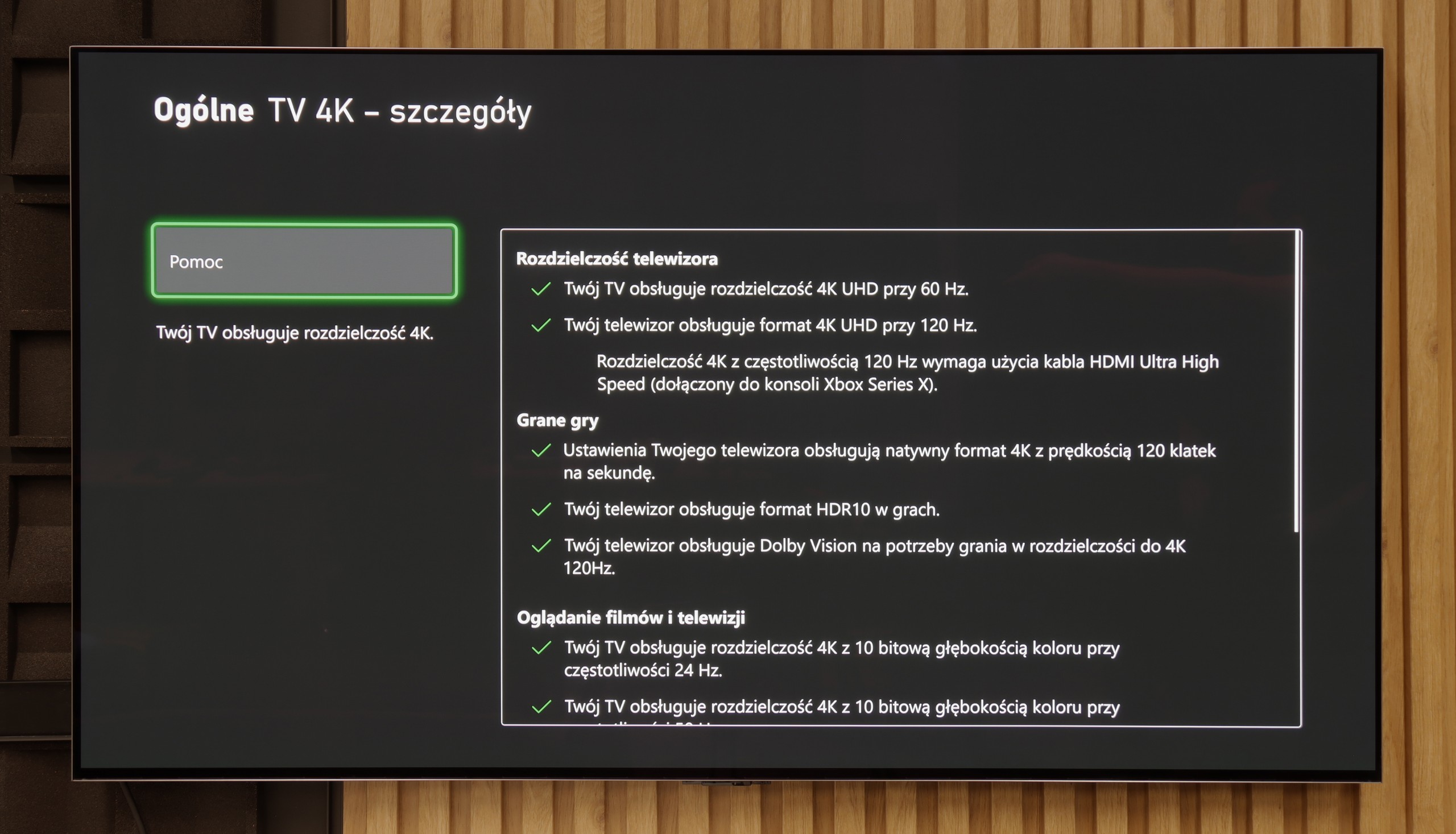

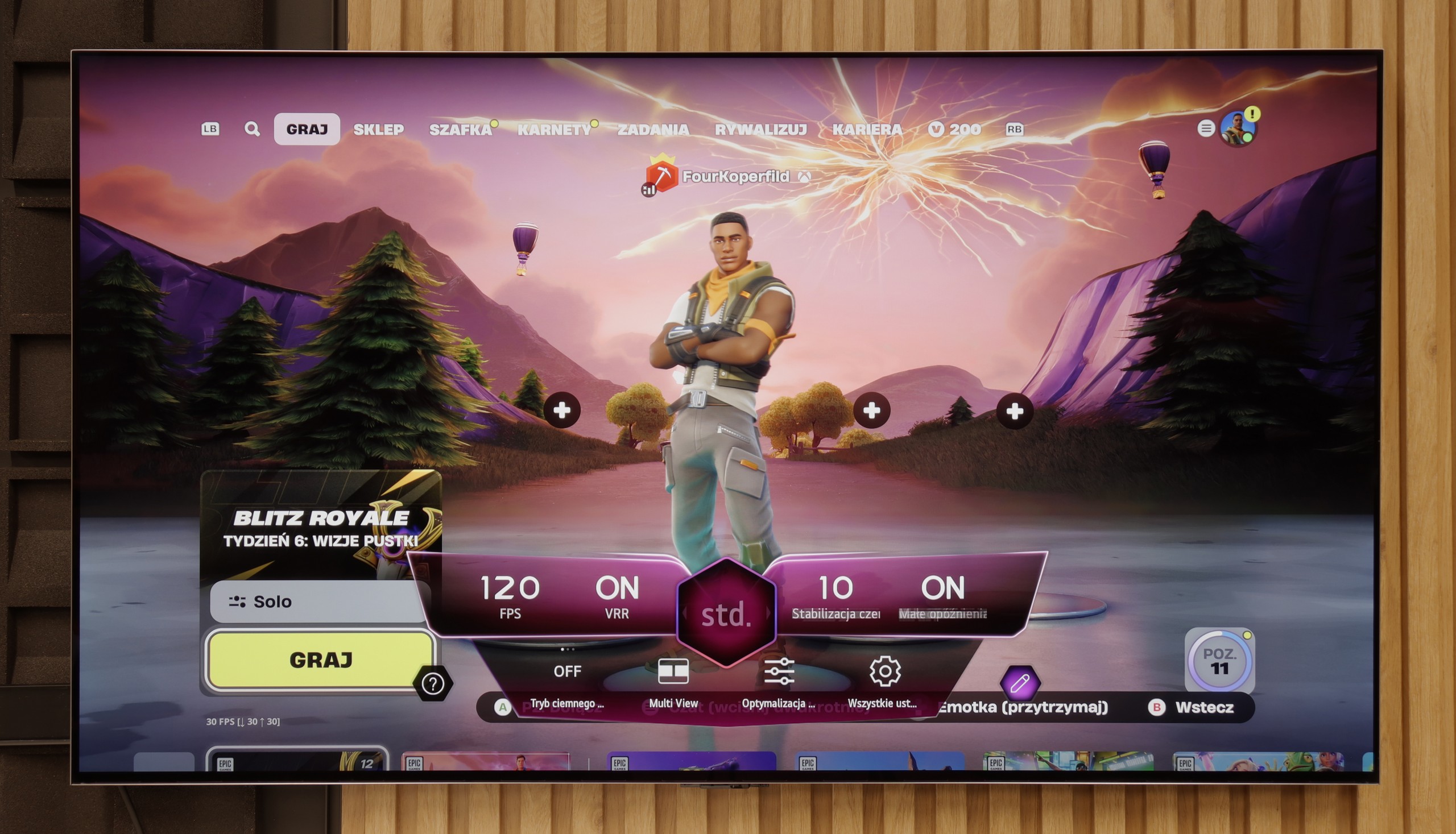

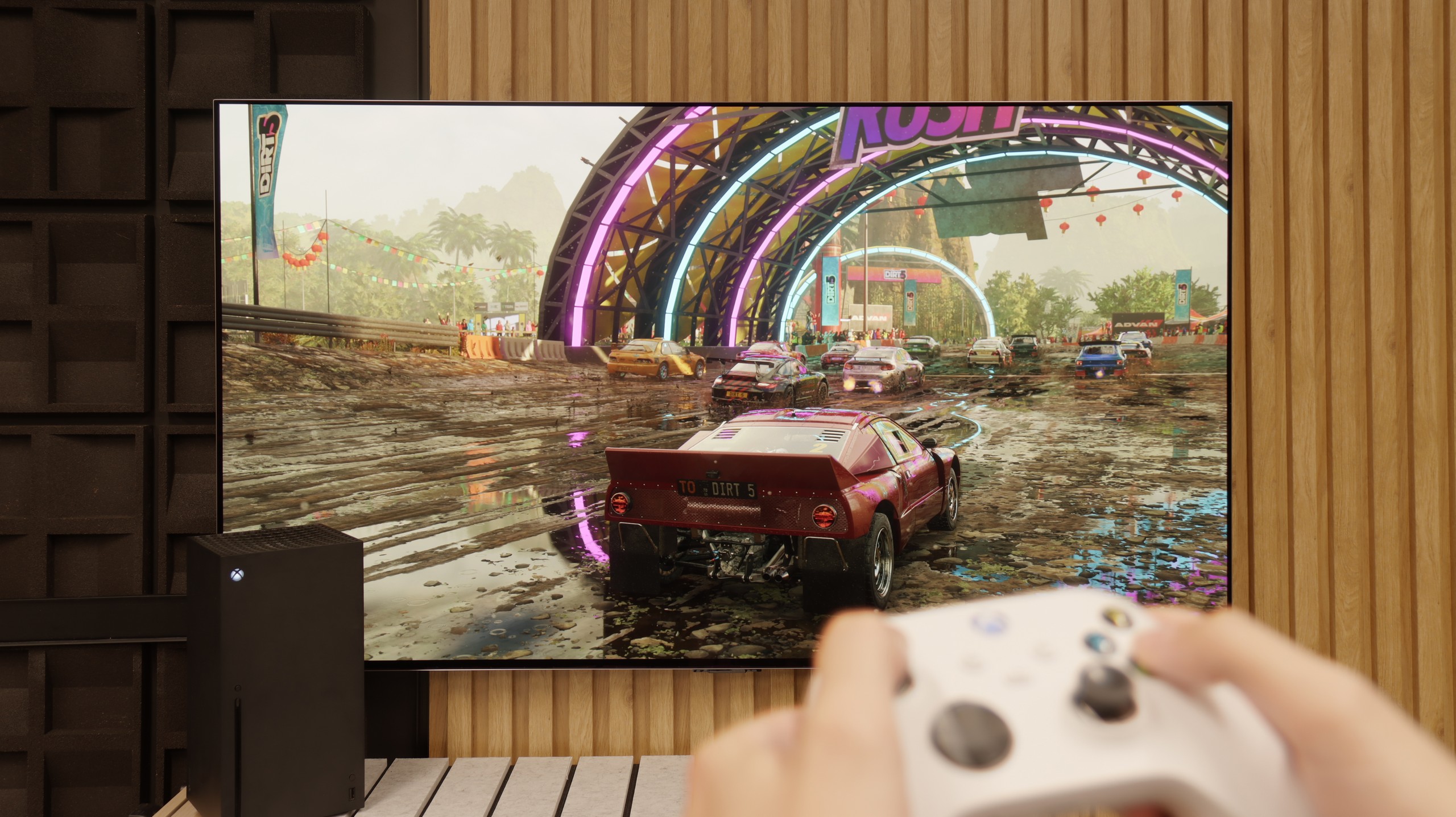
The television Samsung QN92/QN90 is an excellent choice for avid gamers, deserving of the highest recommendations. This model offers practically all the features available on the market in terms of gaming, making gameplay even more exciting. One of the key differentiators is the 120 Hz panel, which ensures exceptional motion smoothness, crucial during dynamic action games. The television also boasts low input lag, guaranteeing instant reactions to player commands. Additionally, technologies such as VRR (Variable Refresh Rate) and ALLM (Auto Low Latency Mode) adjust the refresh rate and automatically switch the television to game mode, translating to even better gaming experiences. Another advantage is the Xbox app, which allows gaming of favourite titles directly on the television, eliminating the need for a console. This is a typical feature of Samsung televisions, making them exceptional in the gaming world.
Auto Motion Plus Game is a feature that really deserves praise for Samsung. It is a motion smoother that works wonderfully in games, creating the impression of a higher frame rate – a 30 frames per second image looks like 45, and 60 Hz becomes close to 90 Hz. Importantly, this feature does not introduce significant lag (input lag does not exceed 25 ms), so it does not negatively affect gameplay comfort, unlike many other smoothers available on the market. This allows gamers to enjoy a much smoother image without compromising responsiveness.
Features for gamers? Perfect. That should be enough for you to know what level we’re dealing with here. The G5 is a TV designed for gamers, so you'll find literally everything you might expect from a gaming screen. There's Game Bar, support for high resolutions with high refresh rates - that is, 4K at 120 Hz, and even more, as the panel has a refresh rate of 165 Hz (which PC gamers will benefit from). The TV supports variable refresh rate (VRR), automatic low latency mode (ALLM), and also properly handles HDR in games thanks to the HGiG feature. All of this adds up to one of the best gaming feature sets available on the market. Well done, LG.
Input lag
9.9/10
9.9/10
SDR
HDR
Dolby Vision
The input lag category is crucial for gamers, and the Samsung QN90D performs exceptionally well in this aspect. Input lag values below 13 ms are impressive, meaning that the delay between pressing a button on the controller and the reaction on the screen is minimal. Such a low value allows for smooth and responsive gaming experiences, which will certainly please both casual gamers and professionals for whom every millisecond of reaction time matters. This makes the Samsung QN92D an excellent choice for those who value precision and speed in gameplay.
The input lag on the LG G5 is incredibly low. The response time to our actions – whether we're gaming with a controller, keyboard, or mouse – is nearly perfect. The controls are instantaneous, and the game reacts exactly when we expect it to. The Dolby Vision Gaming mode does introduce slightly higher latencies, but even then, it's hard to complain about anything – in the worst case, the values hover around 20 ms, which will still be virtually unnoticeable for most gamers.
Compatibility with PC
8.6/10
8.8/10

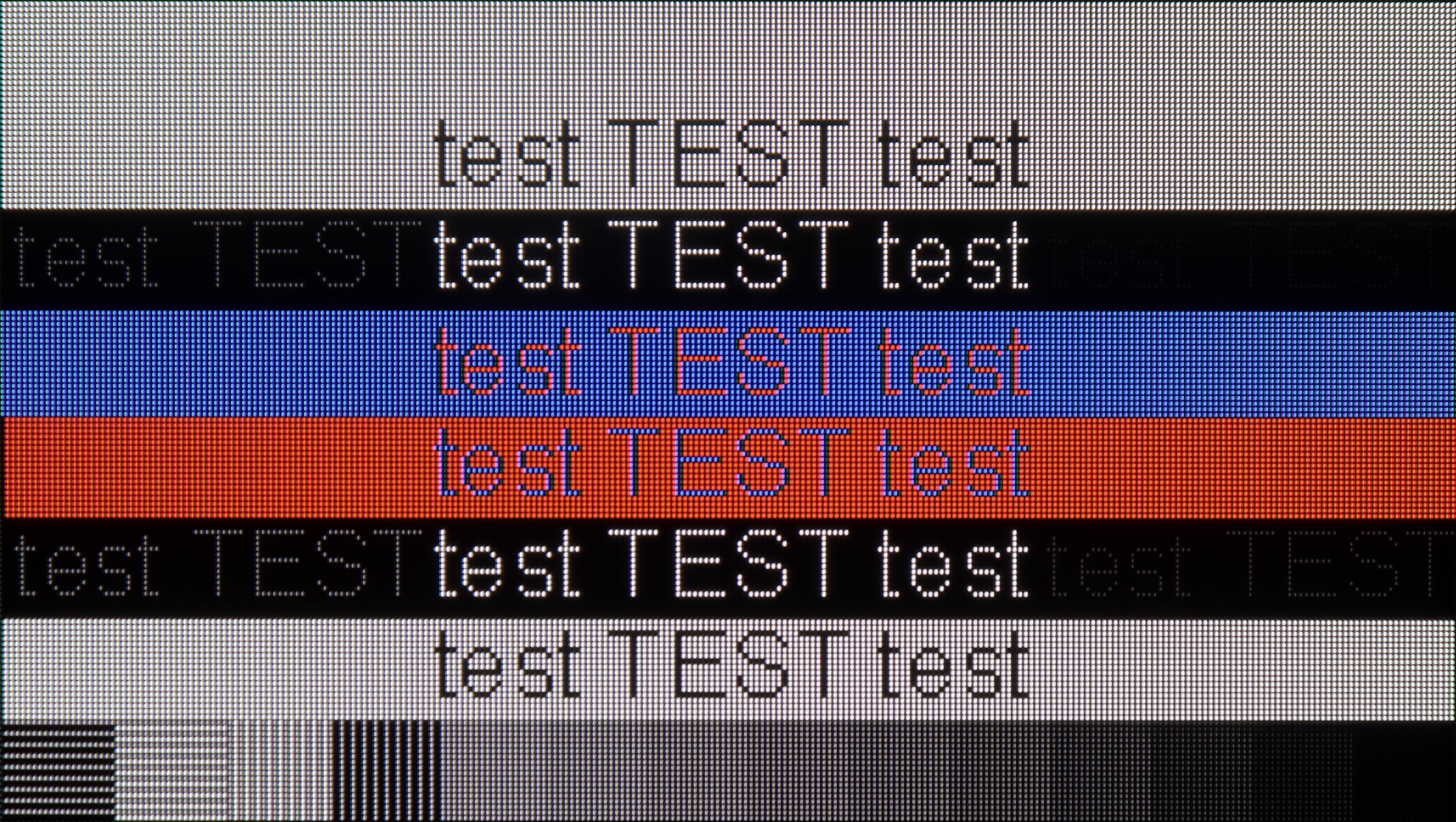
The television stands out with its high performance, supporting chroma 4:4:4 and offering exceptionally low input lag. These features allow users to enjoy fluidity and responsiveness, making it an excellent choice for office work and everyday applications. However, one noticeable drawback is the poor visibility of horizontal lines on dark backgrounds. On the test screen, letters on the right side appear more like vertical lines, which can be frustrating for some users. Nonetheless, the television generally works well with a computer, providing comfort in carrying out daily tasks. It’s also worth mentioning in this paragraph the "Remote PC" feature; thanks to Microsoft’s collaboration with the Korean giant, we can seamlessly pair Windows PCs and use Office 360 apps.
Cooperation with a PC? Almost perfect. The television, as mentioned earlier, has great features for gamers – including those using a PC. Onboard, we find full G-Sync certification, a 165 Hz panel, and super-fast input lag at around 5 ms. Thanks to proper implementation of chroma 4:4:4, fonts are very readable – both the smallest and the largest. Although due to the WRGB subpixel layout, there may be slight shadows around the characters, for most users this effect will be practically unnoticeable. The G5 performs excellently as a screen for work, entertainment, and gaming – also from a computer.
Viewing angles
7.1/10
7.5/10
In the case of TVs with VA panels, you can usually expect limited viewing angles, however Samsung QN90D surprises in this category. Thanks to the applied coating that widens the viewing angles, the TV offers really good performance, which is rarely seen in devices with this type of panels. Although VA panels are typically not the best in this regard, in this model the image remains clear and saturated even when viewed from the side, making it a great choice for larger rooms and group viewing.
The viewing angles on the LG G5 are very good, primarily due to the use of a WOLED panel. It's hard to find fault here – the picture doesn't significantly lose brightness or quality even when viewed from the side. However, it must be noted honestly that there has been some regression compared to the G4 model. The predecessor used an MLA panel with micro-lenses, which offered slightly better light distribution. Also, compared to QD-OLED panels, the angles are worse. Nevertheless, the overall viewing experience at an angle remains very good and shouldn't be an issue for everyday use.
TV efficiency during daytime
6.4/10
8/10

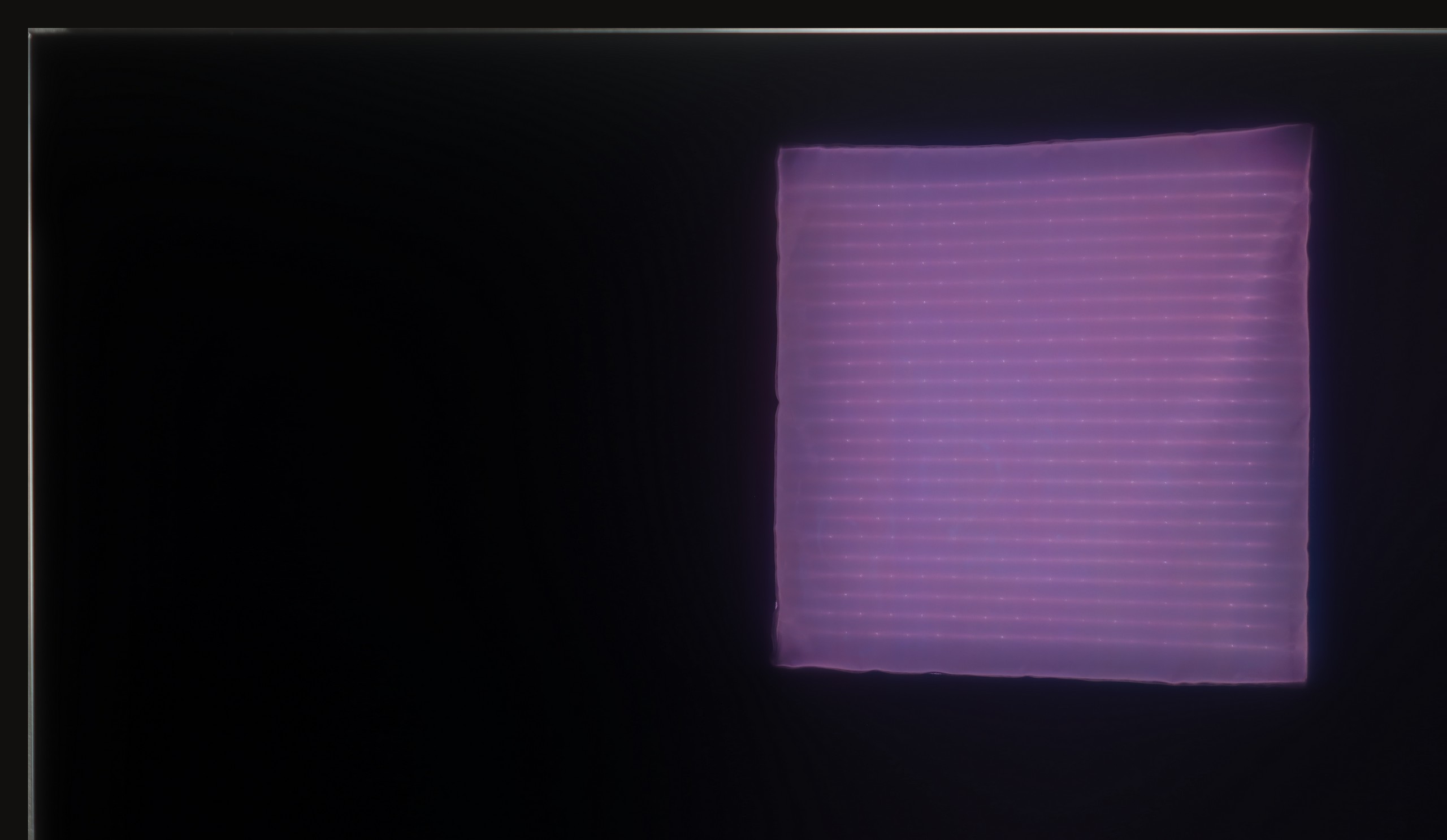


Matrix brightness
Average luminance SDR
LG OLED G5: 810 cd/m2
Samsung Neo QLED QN90D / QN92D: 629 cd/m2
The television performs well in bright rooms due to its high brightness, especially when watching standard television. A constant brightness level of 600 nits ensures excellent visibility even in intense daylight. Unfortunately, despite the use of a satin finish, handling reflections is average, which can affect viewing comfort. An additional downside is the matrix that improves viewing angles, which causes reflections of sunlight to spread vertically, potentially further reducing viewing comfort in a bright environment.
LG G5, with its very high brightness, performs excellently in bright rooms. Even with SDR content, the average brightness is around 800 nits, significantly more than standard televisions. It will handle a bright living room with ease. Although the panel moderately reduces reflections, it still maintains much better blacks and colours during the day than QD-OLED panels or those with a matte finish. The G5 will work effortlessly in very sunny rooms – unless you really can’t stand reflections on the screen. In that case, you’ll need to use blinds or consider purchasing a television with a matte panel.
Details about the matrix
Subpixel Structure:

Panel uniformity and thermal imaging:


TV features
7.4/10
8.5/10
- HDMI inputs0 x HDMI 2.0, 4 x HDMI 2.1 48Gbps0 x HDMI 2.0, 4 x HDMI 2.1 48Gbps
- Other inputsIR (remote)
- OutputsToslink (Optical audio), eARC (HDMI), ARC (HDMI)Toslink (Optical audio), eARC (HDMI), ARC (HDMI)
- Network InterfacesWi-Fi 2.4GHz, Wi-Fi 5GHz, Ethernet (LAN) 100MbpsWi-Fi 2.4GHz, Wi-Fi 5GHz, Ethernet (LAN) 100Mbps
- TV receptionDVB-T, DVB-T2, DVB-S, DVB-S2, DVB-CDVB-T, DVB-T2, DVB-S, DVB-S2, DVB-C
Classic features:
- Recording to USB (terrestrial TV)
- Recording programming
- Picture in Picture (PiP)
- RF remote control (no need to aim at the screen)
- Backlit remote control
- Teletext
- Audio only mode
- Bluetooth headphones support
- Simultaneous Bluetooth headphones & TV audio
Smart features:
- AirPlay
- Screen mirroring (Windows Miracast)
- Wyszukiwanie głosowe
- Voice search in native language
- Ability to connect a keyboard and mouse


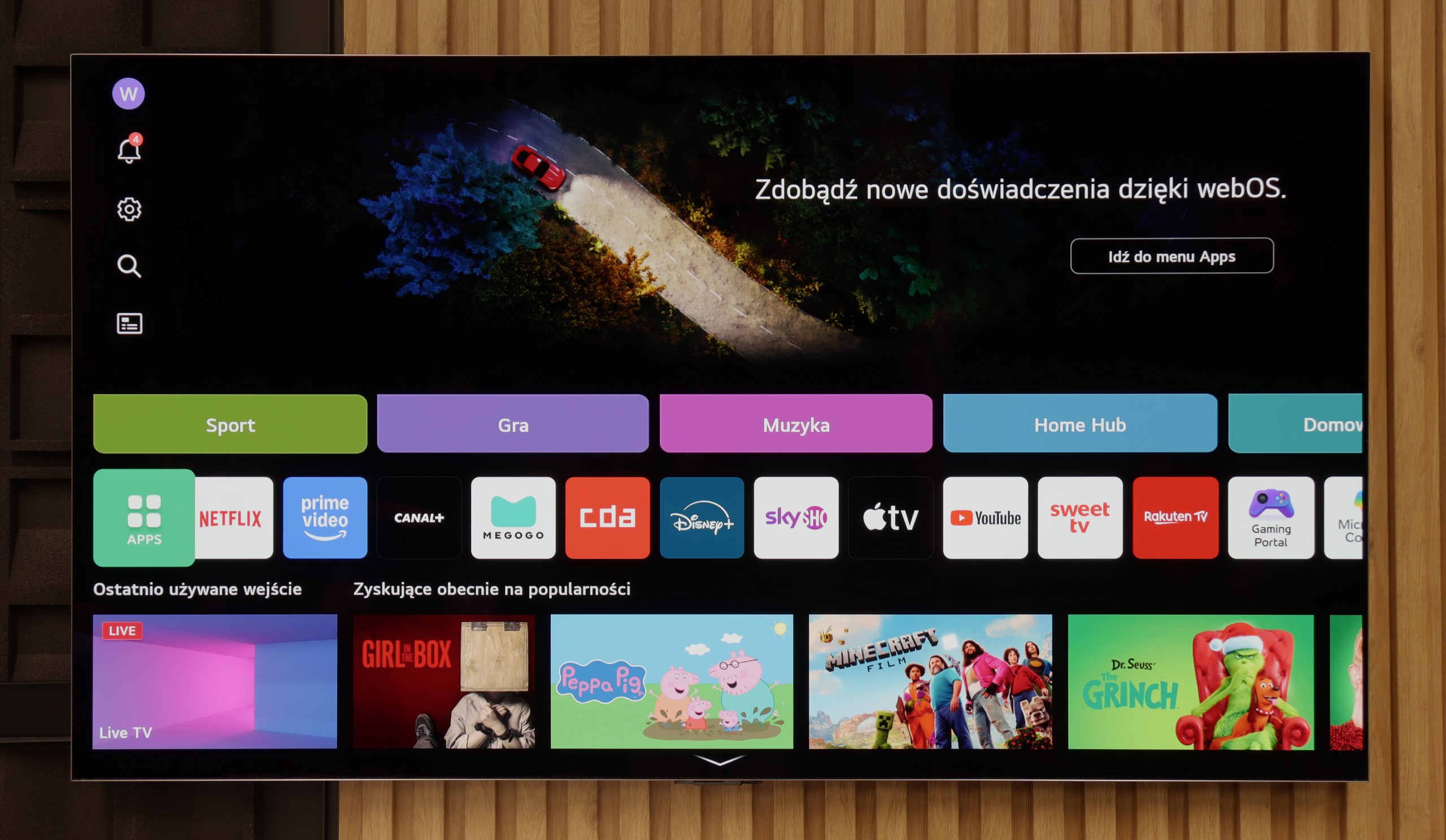
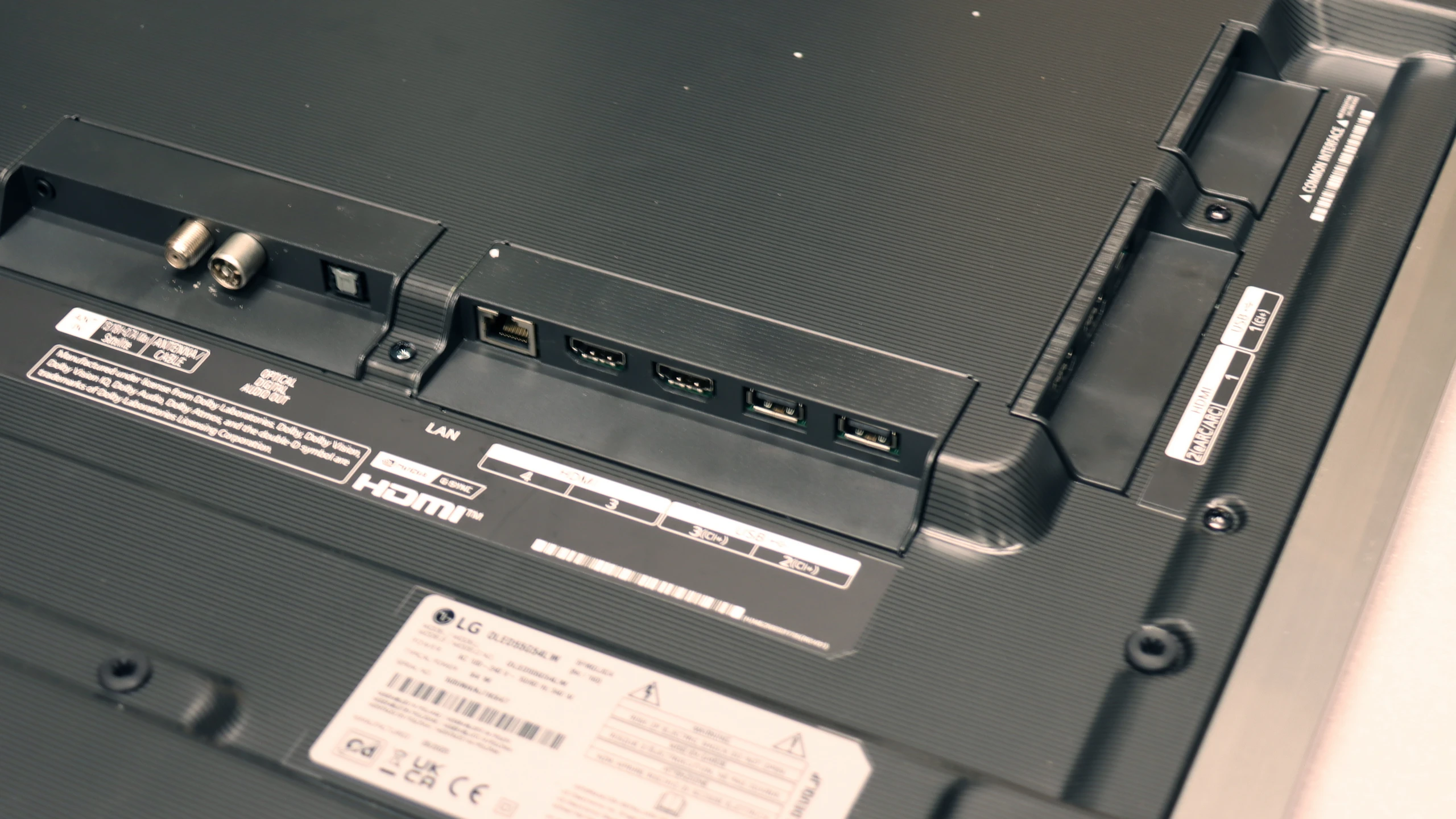
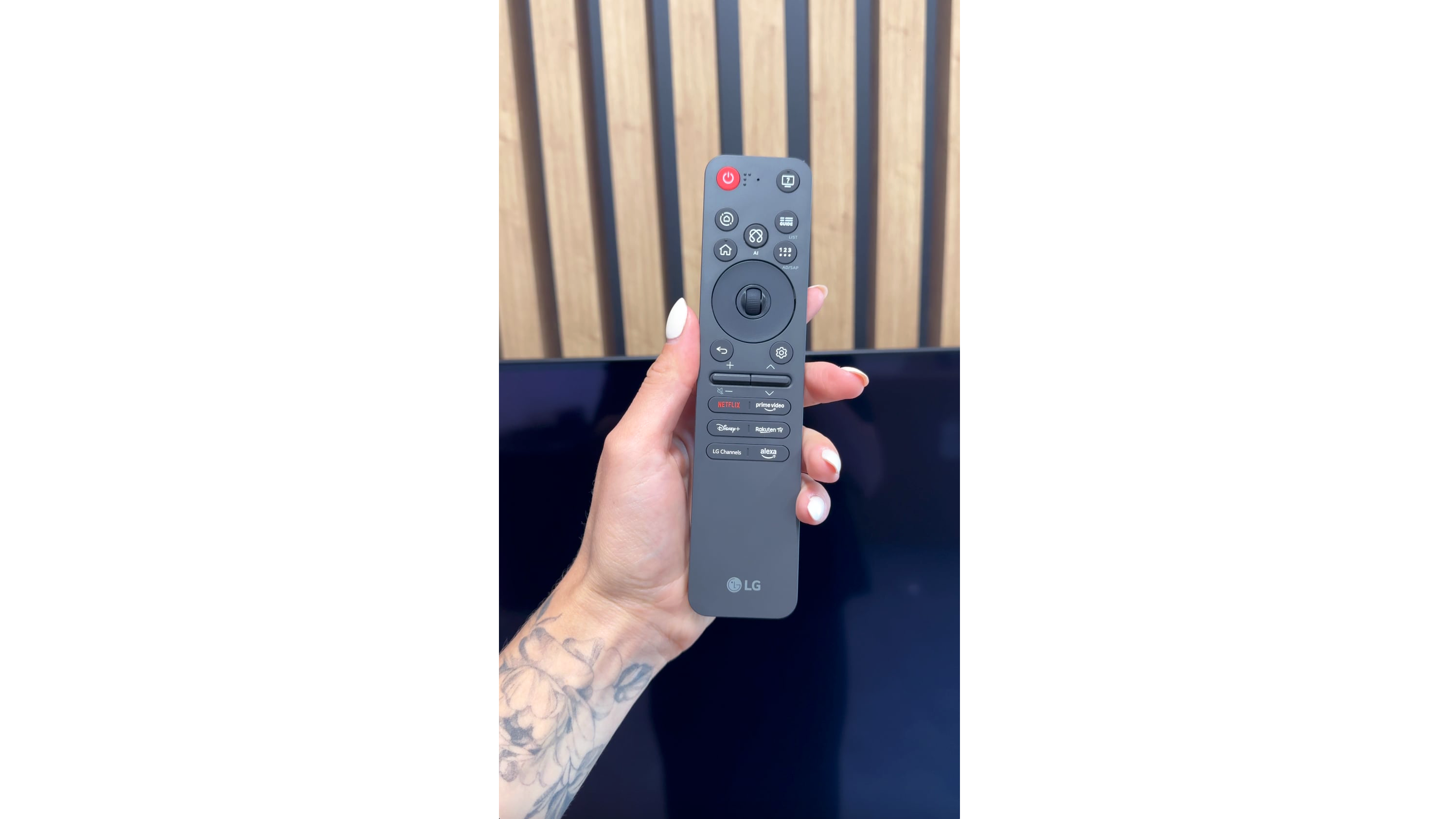
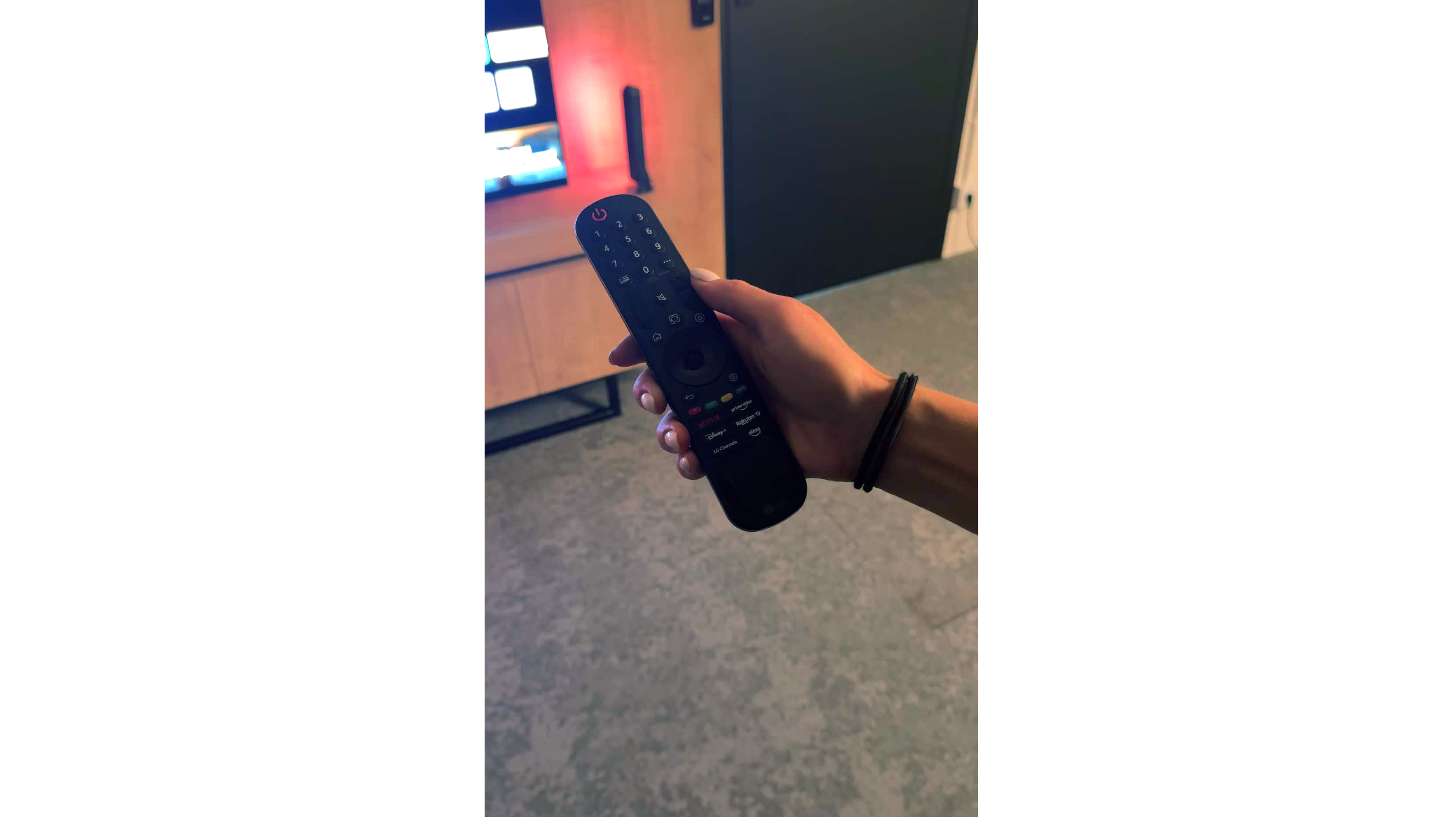
The Samsung QN92D television features a modern Tizen operating system, which offers users an intuitive and visually appealing environment. Tizen ensures smooth and fast navigation through applications, significantly enhancing the comfort of using the television. With an extensive ecosystem, users can easily connect the QN92D to other devices. The television supports many features that make everyday use easier, such as controlling set-top boxes with the remote, eliminating the need for multiple remotes. With AirPlay functionality, Apple device users can effortlessly stream multimedia from their iPhone. Additionally, there is a remote PC feature that allows users to access their computer on a large screen, as well as the Office 365 application, making the QN92D an ideal solution for both work and entertainment.
Furthermore, like many Samsung televisions, the QN92D offers Ambient Mode, which allows users to customise the appearance of the television to blend in with its surroundings. Users can display a variety of images or information, turning the television into an elegant part of the interior decor, even when not in use. Speaking of decor, it’s certainly worth mentioning the device's appearance. It is really very slim, around 2cm at its thickest point, which is impressive. The metal frame definitely gives the impression of a premium device, and the stand included in the box is sturdy.
However, for those using traditional television, the QN92D may prove to be a bit disappointing, as there is no television programme recording function available in the Polish market. Nevertheless, the television offers a Picture-in-Picture (PiP) feature that allows for simultaneous viewing of two programmes at the same time. The Samsung QN92D is a television with rich functionality that caters to both gaming enthusiasts and multimedia users, and it aesthetically fits into modern interiors.
Classic Features
LG G5 has a lot to offer when it comes to classic television features. Apart from the lack of the ability to watch two sources (PIP), the TV performs excellently for everyday use. There are no issues with connecting external Bluetooth devices like headphones, and the EPG interface is very clear and understandable – even for those who are not particularly tech-savvy.
Smart TV Features
The Smart TV in the G5 operates on the WebOS system – it is the heart and brain of the entire television. With the Magic remote, using the G5 is truly enjoyable. We control the cursor on the screen with wrist movements, which resembles using a mouse in the air. The system itself is very sophisticated and offers everything one could expect: AirPlay, screen mirroring, voice search, and voice commands – all of which work smoothly and without delays. There’s no doubt it’s one of the best operating systems in TVs on the market.
Note:
During our tests, we had almost nothing to complain about – maybe aside from one exception: the confusion surrounding the remote. Depending on the market and the specific version of the model, you may encounter the new, minimalist Magic remote (without a numeric keypad), or the older version with a full set of buttons. We tested the G54LW model, which had the new Magic remote, but it’s hard to say how the situation looks in other variants. It may be a similar situation to the LG C5 series, where the remote attachment also depends on the specific market.
Playing files from USB
9.1/10
9/10
Supported photo formats:
Maximum photo resolution:

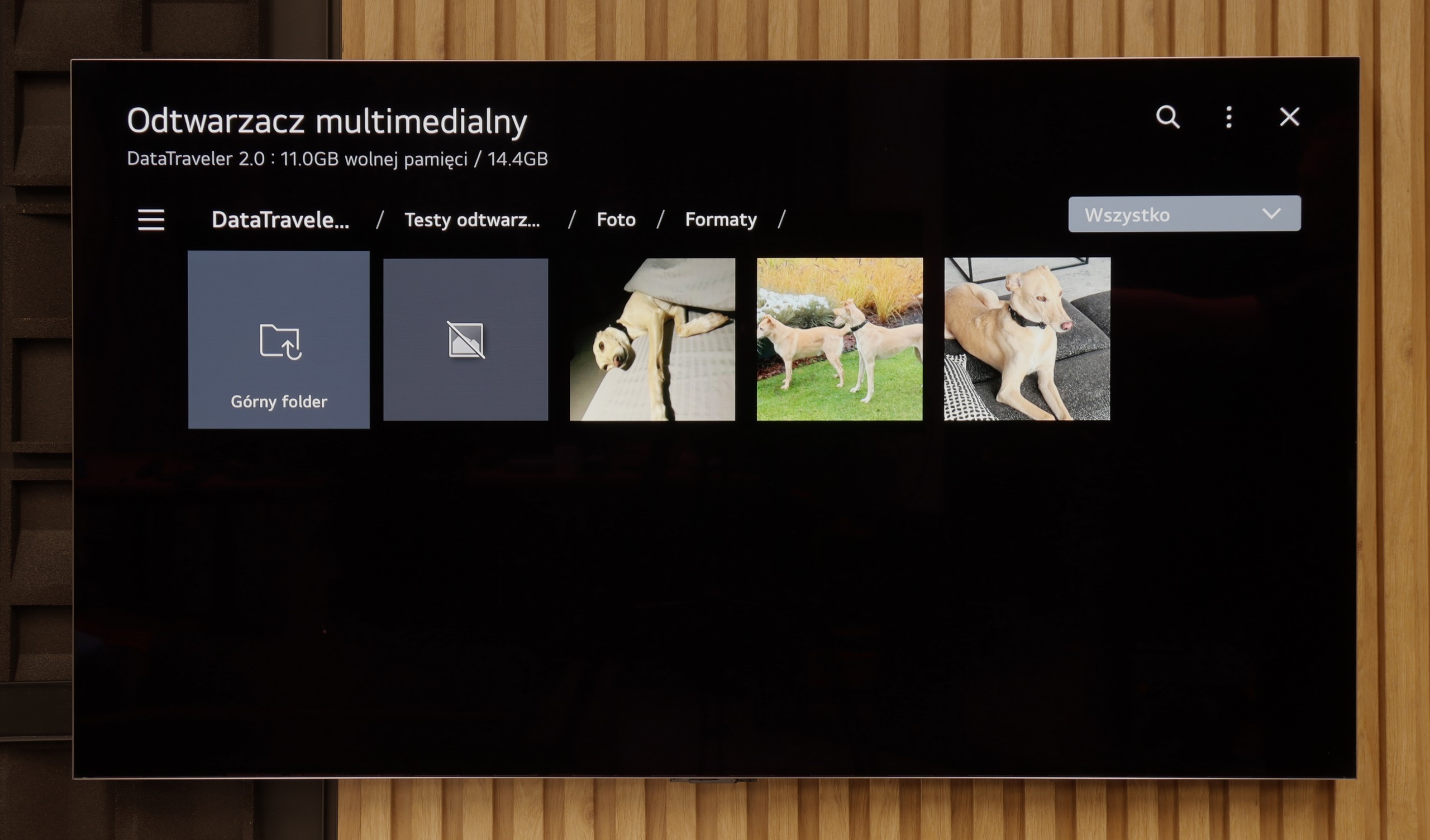
The built-in player in QN90D should satisfy a large portion of users. It will easily handle most popular video and audio formats. However, more demanding users may notice some shortcomings – it is not possible to play photos in HEIC format, which is popular on Apple devices, as well as several other, less common photo formats.
The built-in media player in the LG G5 is really quite good. It supports virtually everything you can expect from a modern television – most popular formats work without any issues, and the app's performance is fast. Our only disappointment was the lack of support for very high-bitrate HEVC files at 85 Mbit/s – similar to the C5 and B5 models. Interestingly, the same file played flawlessly on last year's LG OLEDs, so it's hard to say what has caused this change. Nevertheless, in everyday use, the G5 will handle the vast majority of materials, and there will be no need to connect any external devices for media playback.
Apps
8.7/10
9.1/10














































Sound
6.9/10
8.7/10
- Maximum volume--
- Dolby Digital Plus 7.1
- Dolby True HD 7.1
- Dolby Atmos in Dolby Digital Plus (JOC)
- Dolby Atmos in Dolby True HD
- DTS:X in DTS-HD MA
- DTS-HD Master Audio
The television is equipped similarly to the QN95 with a speaker system featuring a 4.2.2 layout with a total power of 70W (the exception is the 50' variant with a 2.2 layout and the 43' with a 2.0 layout). Despite its very slim casing, the television sounds loud and clear, and the overall sound is well balanced. Points were deducted as per standard practice for every other Samsung model for the lack of support for the DTS format. It's also worth mentioning the proprietary Q-Symphony feature, which allows you to synchronise the sound of the television with a Samsung soundbar.
The sound on the LG G5, considering its slim design, is truly phenomenal. When listening to music, you can sense a light, pleasant bass, and in films, the dialogue is clear and easy to hear – it doesn’t get lost even in dynamic scenes. Unfortunately, a bit of a disappointment is the lack of support for the DTS format, which LG used in its older models. It's a shame, as many home theatre enthusiasts might see this as a step backwards.


